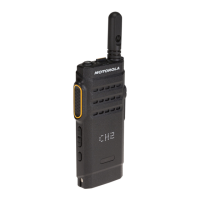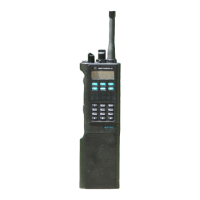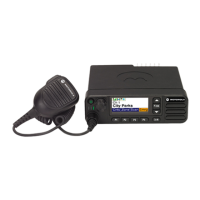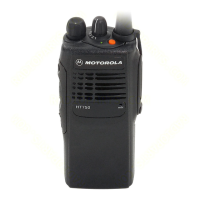• PABX (local short number)
• Other (phone number)
The Contact List has a maximum capacity of 2000 Contacts, with up to 1000 associated Private and up
to 1000 associated either Phone or PABX numbers distributed among the contacts.
The address book is also accessible through PEI. Using the PEI enables you to read, write, and modify
contact list entries using AT commands.
2.7
Group Call
The group call service enables the radio to communicate with a group of other TETRA radios using
point to multi-point operation.
This service is available in both TMO and DMO. You can initiate a new group call to the selected
talkgroup or talk back to the existing group call by pressing the PTT button.
2.7.1
Programmable Talkgroups
The radio offers a talkgroup list facility. Each talkgroup entry contains a TETRA group address and
may be associated with a name tag. The talkgroups can be defined in the codeplug as per the radio
capabilities.
Talkgroups are configured separately for TMO and DMO modes. To program a talkgroup in TMO
define its name and Group Short Subscriber Identity (GSSI). To program a talkgroup in DMO define its
name, Group TETRA Subscriber Identity (GTSI) and frequency. The radio operator can select a
talkgroup which has an associated TMO or DMO frequency depending on the mode selected. When
switching between the TMO and DMO modes the last active talkgroup is selected. However the
required talkgroup can be mapped in CPS. In such a case a corresponding talkgroup is automatically
selected during mode switching, regardless of the previously selected talkgroup.
NOTICE:
Neither the group name nor the corresponding group address can be edited using the
radio MMI.
A talkgroup linked to several networks produces as many new unique talkgroups as the networks it
associates with. For example, if the talkgroup has the same GSSI and network in several talkgroup
folders, one unique talkgroup is created. Alternatively, if the talkgroup has the same GSSI but with
different networks in several talkgroup folders, several unique talkgroups are created for each network.
The GTSI indicates the talkgroup uniqueness. It is a combination of the GSSI and the network
associated to the talkgroup in the given talkgroup folder. The talkgroup folders do not determine the
uniqueness of the new talkgroups.
2.7.2
Talkgroup Folders
The talkgroups are organized in folders. You can select a talkgroup by first choosing a folder and then
the talkgroup in the folder. The size of each folder is flexible and can be defined through provisioning.
The talkgroup folders are organized in a tree-structure:
• Level 1 Folders
- Placed at the root of the folder structure.
- Can contain both level 2 folders and talkgroups at the same time.
- Can contain any number of level 2 folders.
• Level 2 Folders
MN002955A01-AA
Chapter 2: Services and Features
22 Send Feedback
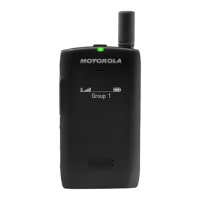
